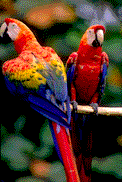 SHANGRALA'S
SHANGRALA'S
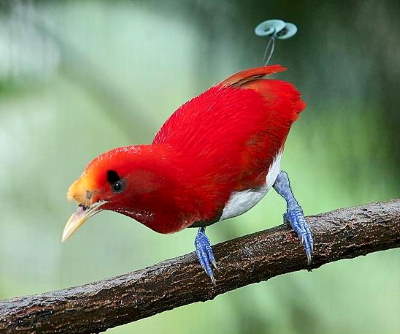
BIRDS
OF
PARADISE!
![]()
There are about 10,000 different species of birds. Birds-of-paradise is a general
term used to refer to a collection of 39 species of tropical birds that are
endemic to eastern Indonesia, Papua New Guinea, and eastern Australia.
They are typified by some of the most beautiful plumage to be found on these
colorful birds anywhere in the world, as well as incredibly elaborate
courtship rituals to attract mates.
The process of natural selection, which involves the traits of better-
equipped individuals being passed on to their offspring, is how evolution
occurs, and when this process takes place in remote locations, such as
where these colorful birds live, the results of thousands of years of
evolution is just spectacular.
Image Source
Here Are Some Most Beautiful Birds Of Paradise. Enjoy! :)
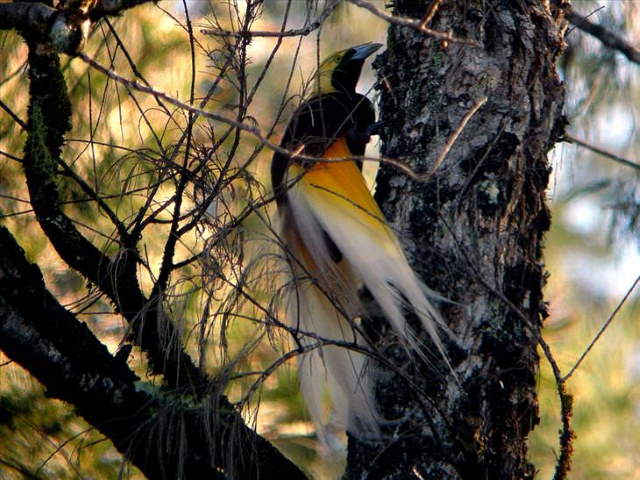
Lesser Bird-Of-Paradise
The lesser bird-of-paradise is native to the forests of northern New Guinea,
as well as the nearby islands of Misool and Yapen. The male has an emerald-green
throat, a pair of long tail wires and ornamental flank plumes that are
deep yellow at their base, becoming whiter at their extremities. The female
is maroon-colored and much plainer than the male.
Image Source
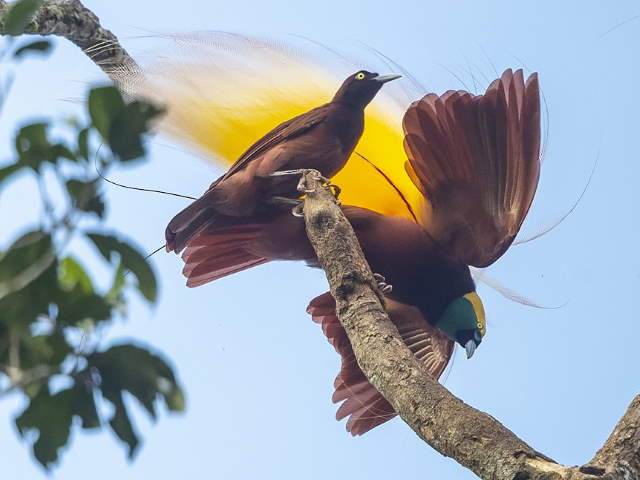
Greater Bird-Of-Paradise
Although similar in appearance to the lesser bird-of-paradise, the
greater bird-of-paradise is a different species. It's the largest bird-of-paradise
extant today, with males measuring up to 43cm (17in). The male has a green face
and an iridescent yellow-silver crown, with maroon-colored body plumage. Its
flank plumes are yellow at the base, becoming whiter towards their extremities.
The female is maroon-colored and smaller than the male. This species is found
in southwest New Guinea and the Aru Islands of Indonesia.
Image Source
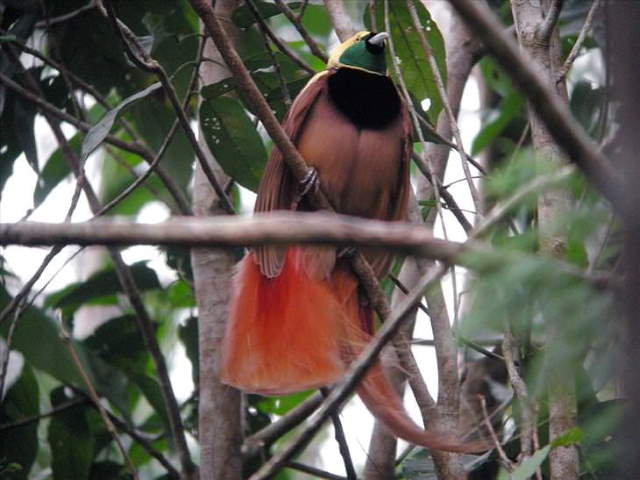
Raggiana Bird-Of-Paradise
This polygamous bird-of-paradise, recognizable by its large reddish-pink flank
plumes, is the national bird of Papua New Guinea. Males attract mates by
clapping their wings and shaking their heads, and also feature long, black
tail wires. The females are comparatively dull-looking compared to the
flamboyant males.
Image Source
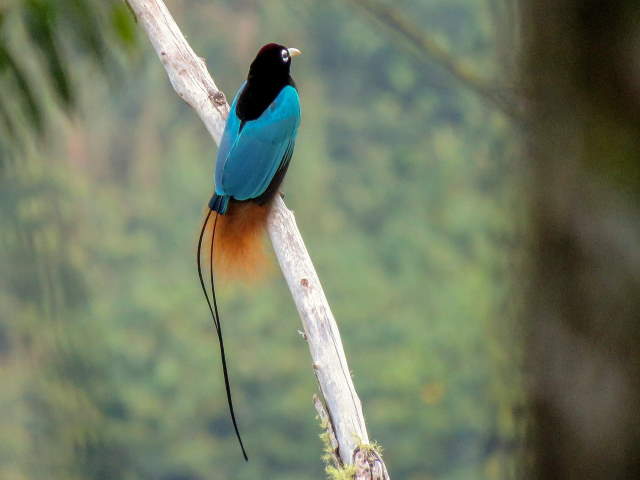
Blue Bird-Of-Paradise
Some ornithologists believe this bird to be the most beautiful in the world.
The male performs one of the most elaborate courtship displays in all of the
animal kingdom - he hangs upside-down from a branch and proudly displays his
violet-blue and cinnamon-colored flank plumes, together with his two ribbon-like
tail feathers, to any would-be mates in his vicinity. Females are chestnut-brown
in color. Sadly, the blue bird-of-paradise, endemic to Papua New Guinea, is now
threatened with extinction, because the males' plumage is highly prized and
thus they are hunted.
Image Source
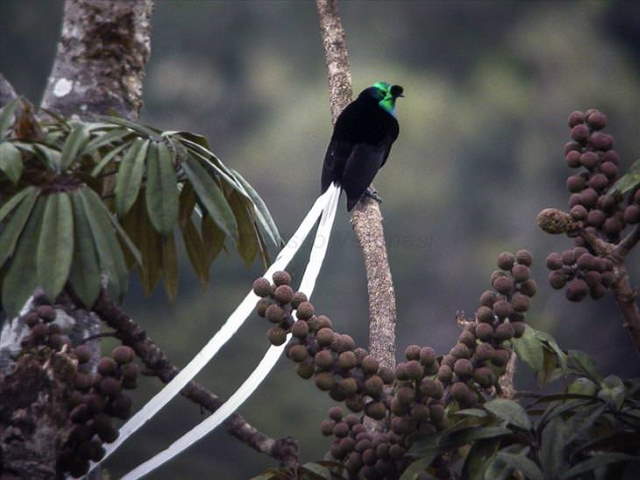
Ribbon-Tailed Astrapia Bird-Of-Paradise
This bird is the most recently-discovered of all the bird-of-paradise species.
It was first observed by the naturalist and explorer, Fred Shaw Mayer, in
1938. While males can grow up to 32cm long, their tail feathers can measure
more than three times the length of their bodies - the longest tail feathers
in relation to body size of any bird species in the world. Females are brown,
with an iridescent head. The species is endemic to the central highland of
Papua New Guinea.
Image Source
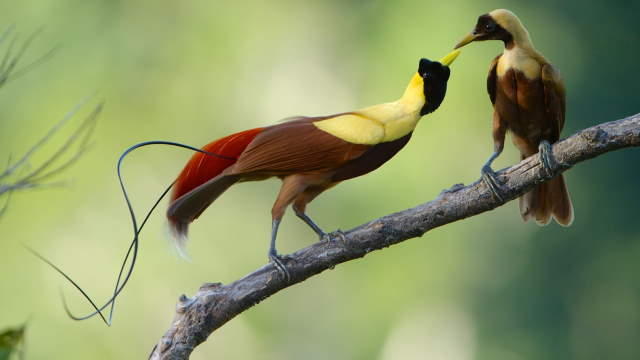
Red Bird-Of-Paradise
Endemic to the Indonesian islands of Waigeo and Batanta, males have an emerald-green
face, a pair of black, corkscrew-shaped tail wires, and ornamental red tail plumes,
which take at least six years for the bird to attain. Females look remarkably
similar to the males, however, they are smaller and have no ornamental plumes.
This bird-of-paradise shares its habitat with Wilson's bird-of-paradise, which
you'll see further down in this list.
Image Source
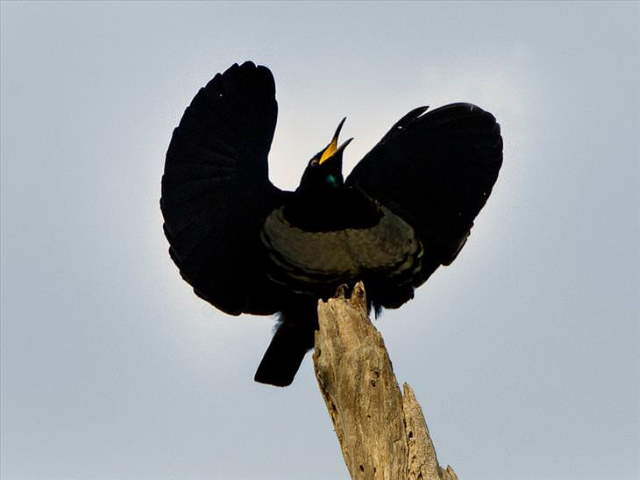
Victoria's Riflebird
Discovered in 1848 and named after Queen Victoria, this bird is endemic
to the Atherton Tableland region of Queensland, Australia. Males feature
iridescent purple plumage, which is more blue-green on the head and bronze
on the lower breast. They also have a curious triangular blue patch of
plumage on their necks. Females are brown with white 'eyebrows'. The male's
courtship display is fascinating - he curves his wings around his body and
dances from side to side, while also puffing out his throat to accentuate
his colorful neck plumage.
Image Source
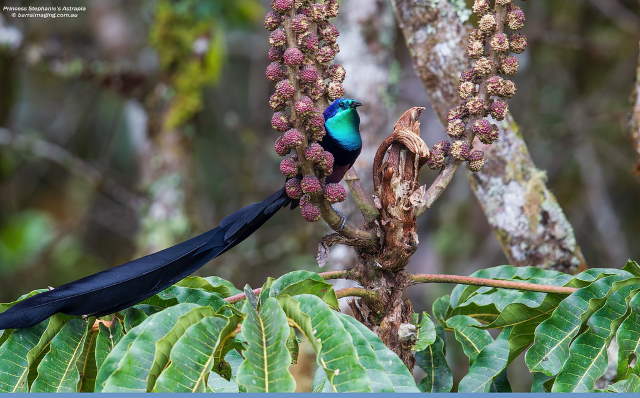
Princess Stephanie's Astrapia
This species was discovered by German ornithologist Carl Hunstein in 1884
and is named in honor of Princess Stephanie of Belgium. It is a medium-sized
bird, measuring some 37cm in length. Males are black in color, with
iridescent heads. They also have two long, broad and purplish-black tail
feathers. Females are dark brown with bluish-black heads The species is
endemic to central and eastern Papua New Guinea.
Image Source
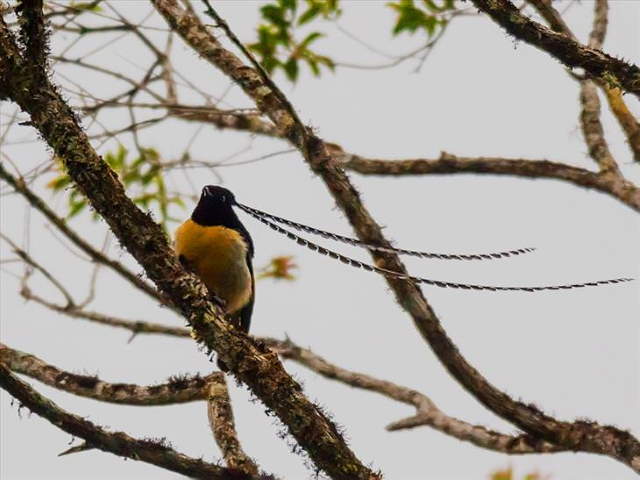
King Of Saxony Bird-Of-Paradise
When male specimens of this bird were first brought to Europe, people
didn't believe it to be real thanks to its enormous ornamental head
plumes that it can raise at will. Said head plumes can measure up to
50cm long - more than twice the size of its body. Males are black and
yellow with dark brown irises, while their head plumes are white and
blue. Females are grayish brown. The species lives on the island of
New Guinea at altitudes of 1,300-2,800 meters above sea level.
Image Source
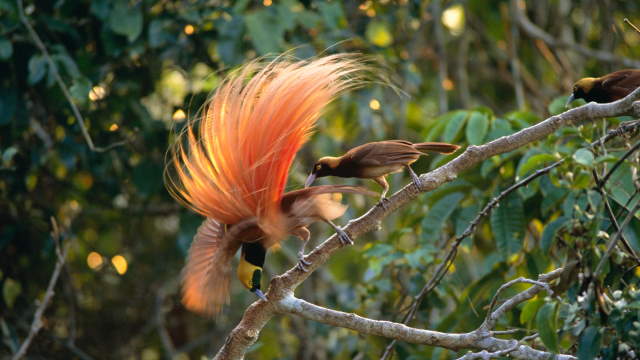
Goldie's Bird-Of-Paradise
This bird-of-paradise is endemic to Papua New Guinea and is named after
Scot Andrew Goldie, who discovered the bird in 1882. Males can grow up
to 33cm long and have yellow and dark green plumage with lavender-gray
breasts. Their ornamental tail plumes are crimson-colored, and they
also have two long tail wires. Females are olive-brown with cinnamon-brown
undersides.
Image Source
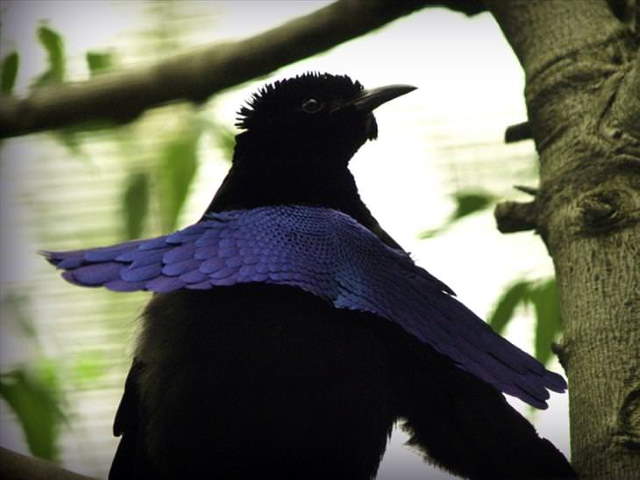
Superb Bird-Of-Paradise
Characterized by a courtship ritual that is one of the most bizarre
in the avian world, superb birds-of-paradise grow to about 26cm long.
Males are black with an iridescent green crown and a blue-green breast
shield. They also have a velvety black 'cape', which extends down
their backs. Females are smaller and reddish-brown in color. Males are
known to compete fiercely for mates, and this is due to a very low
population of females relative to males. The species is endemic to the
rainforests of New Guinea.
Image Source
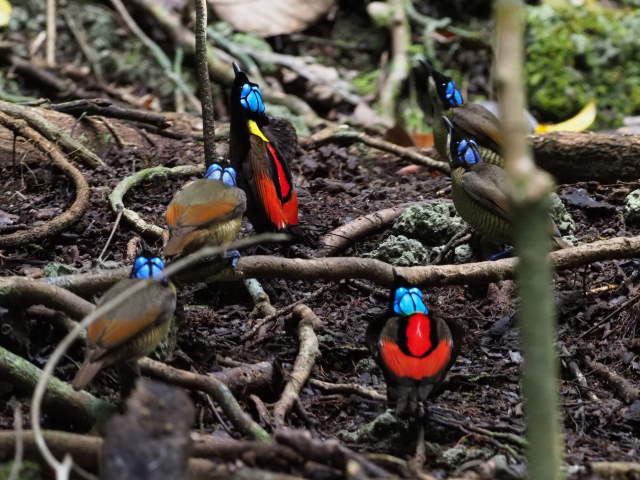
Wilson's Bird-Of-Paradise
One of the smaller birds-of-paradise is also one the most colorful. Males
feature red, black, teal, blue and violet in their plumage, and their
heads are adorned with a black double-cross pattern. Their tail feathers
curl back upon themselves in a spiral fashion. In contrast, females are
brownish in color, otherwise only featuring a splash of blue on their crowns.
Image Source
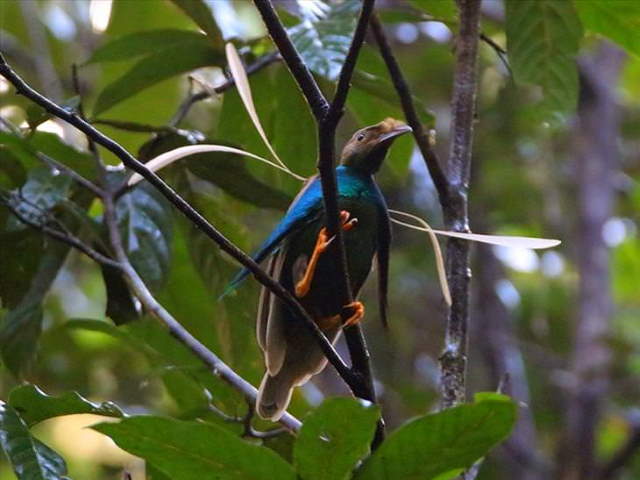
Wallace's Standardwing
This species is believed to be the first bird-of-paradise ever brought to
Europe. This is because of an account by Antonio Pigafetta, an Italian
scholar and explorer who traveled with Ferdinand Magellan on the voyage
that was to become the first-ever circumnavigation of the globe, that
described a gift of birds with features very similar to a standard wing's.
Its colorful plumage belies something else hiding underneath - two pairs
of long, white plumes that come out of the bend of a male's wings and can
be raised or lowered at will. Females are olive-brown and rather plain,
yet have longer tails than the males do.
Image Source
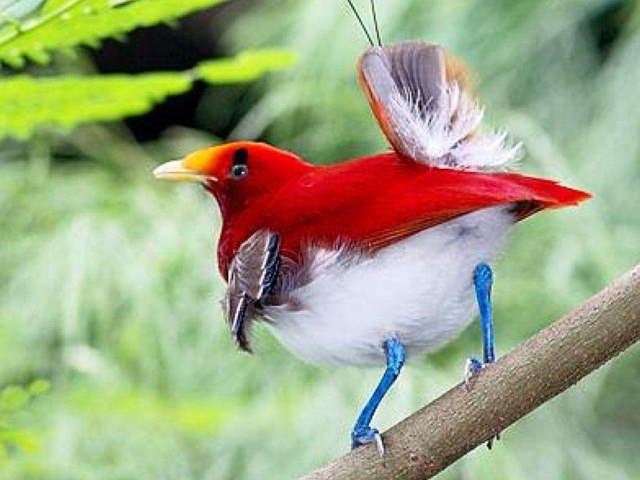
King Bird-Of-Paradise
Despite its grandiose name, the kind bird-of-paradise is the smallest
bird-of-paradise of all. Males are crimson and white, with sharply-contrasting
bright blue feet. They also have fan-like plumes at their shoulders, which are
colored green. Topping off this bird's spectacular plumage are two elongated
tail wires with emerald-green disk feathers at the tips. Females are a plain
old brown! Courtship displays by males involve tail-swinging, the puffing-out
of abdominal feathers and numerous acrobatic movements of their tail feathers.
The species can be found on New Guinea and surrounding smaller islands.
Image Source
![]()
Share And Give Your Friends
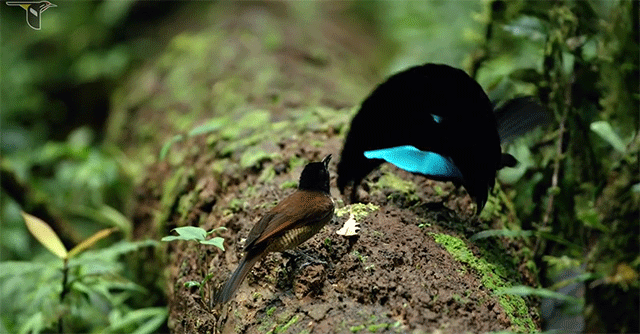
Some SMILES Too! :)

![]()
SEE ALSO: Beautiful Exotic Birds!

^BACK To TOP^
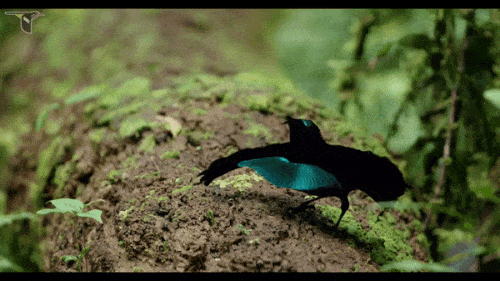
For those of you who Want More FUN - Visit The Shangy Fun List! Variety is the
spice of life! The Shangy Fun List is an ezine packed full of Poems, Inspirational and
Heart Warming Stories. Jokes from G to slightly R, and Anything else that just
might make you SMILE! Join In The Free FUN!! ... :)
Yes! Click Here To GO TO THE ARCHIVES!-
![]()
![]()
Share This Page!
If you are looking for more, here are some good places to start:

Owl Lovers!-
Colorful Birds 3!-
Bird Inspirations!-
Under His Wings!-
Real Angry Birds!-
Maria The Goose!-
Bird Feeder Birds!-
Bee Hummingbird!-
Feeding The Eagles!-
Rainbow Fruit Dove!-
Rhinoceros Hornbill!-
Owls In Camouflage!-
Singapore Bird Park!-
Beautiful Kea Parrots!-
Sociable Weaver Birds!-
Falkland Islands Babies!-
Hong Kong's Noah's Ark!-
Wilson's Bird Of Paradise!-
Beautiful Birds And Words!-
A-Z Animated Pictures!-


 -To SHANGRALA-
-To SHANGRALA-
SPECIAL THANKS Goes To LINDA And GENIANN For Sharing This With Us.
![]()
Copyright © 1996 Netscape Communications Corporation. Mozilla is
a trademark of Netscape Communications Corporation.
Note: This is an Unofficial God, Jesus Christ, Family, & Cartoon Fan Site.
© All graphics representing Disney characters are copyrighted by Disney.
Likewise all other graphics & music Copyright © by their own Individual Artists.
I do not own any graphics on this site. If you do, please notify me
and I'll give
you proper credit, a link, or remove it immediately according to your wishes.
~*~ Copyright © 1997-2024 Elrhea M. Bigham ~*~